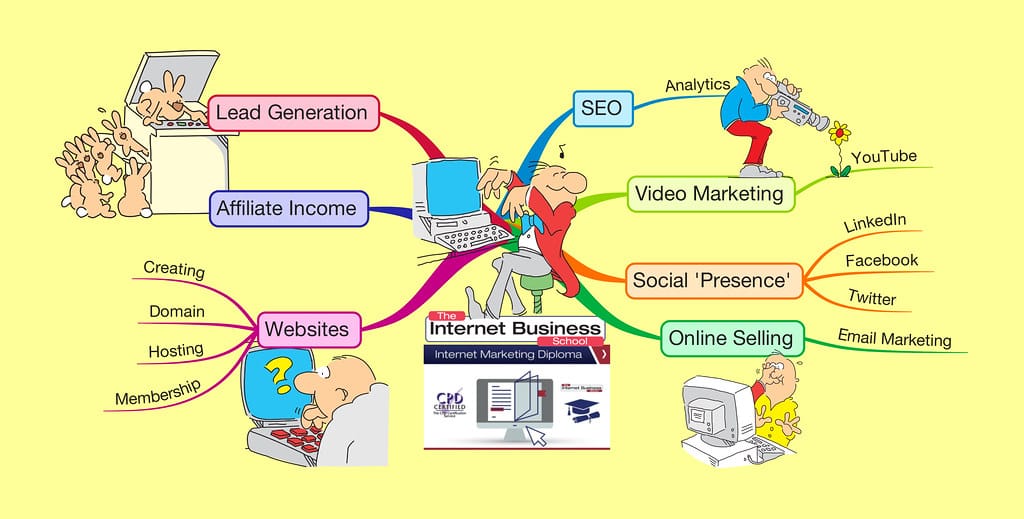In today’s digital world, having a well-designed website is absolutely essential for any business looking to establish itself online. But with so many options and strategies to consider, it can be tricky to know where to start.
This comprehensive guide breaks down the key elements of effective web design and proven techniques for boosting your online presence. By the end, you’ll have a clear roadmap for creating a high-converting website that drives results for your business. So let’s dive in!
Key Takeaways:
- Invest in a professionally-designed website to attract and retain customers.
- Prioritize user experience through intuitive navigation and engaging content.
- Optimize for conversions with clear calls-to-action and streamlined checkout.
- Ensure your site is mobile-friendly and fast-loading on all devices.
- Use SEO best practices, like keyword optimization, to improve search visibility.
- Incorporate social media and encourage sharing to increase reach.
- Establish trust and credibility through excellent customer service.
- Create a seamless e-commerce experience to maximize online sales.
Why Web Design is Essential for Boosting Your Business Online
In the digital age, your website is often the first interaction many potential customers will have with your business. That’s why investing in professional web design should be a top priority.
Here are some key reasons why quality web design is so important:
Attracts Customers and Builds Trust
A visually appealing, well-designed site draws customers in and creates a positive first impression. It shows you are serious about your online presence and establishes credibility for your brand.

Improves Search Engine Visibility
Optimizing your site for search engines with keywords and metadata makes it easier for customers to find your business online.
Retains Existing Customers
Providing an excellent user experience encourages repeat visits and builds loyalty with existing customers.
Drives Business Growth
A high-quality website shows you are investing in your online presence, which ultimately supports overall business growth.
As you can see, web design has a significant impact on attracting customers, building credibility, improving search visibility, retaining loyal customers and ultimately driving business growth. Prioritizing professional design should be at the core of your online strategy.
Understanding User Experience and Conversion Optimization
Beyond just aesthetics, two critical elements of effective web design are user experience (UX) and conversion optimization.
User Experience (UX)
User experience refers to how easy and enjoyable your website is to navigate and interact with. A positive UX keeps visitors engaged.

Here are some key UX factors to optimize:
- Intuitive navigation: Making key pages easy to find
- Mobile responsiveness: Adjusting layout for mobile devices
- Page load speed: Ensuring fast performance
- Visual appeal: Using quality images, video, etc.
- Value-focused content: Offering truly useful information
Conversion Optimization
Conversion optimization means designing your site to encourage visitors to take desired actions, like making a purchase.
Examples of optimization tactics:
- Prominent calls-to-action
- Fewer steps in the checkout process
- Trust symbols like customer reviews
- Targeted on-site promotions
By focusing on both UX and conversion optimization, you can create a high-performing website tailored to your business goals. Test different versions and continuously optimize based on data.
The Role of Content Strategy in Effective Web Design
In addition to visual design and technical elements, the content on your website is hugely important for engaging visitors and achieving results.
What is Content Strategy?
Content strategy involves planning, creating, and distributing content tailored to your audience and goals.

Benefits of Content Strategy:
- Builds trust and authority: Position yourself as an industry expert by providing valuable insights and resources. Use storytelling to connect emotionally with readers.
- Improves SEO: Optimize content with keywords to rank higher in search and be discovered by interested readers.
- Drives traffic: Promote your content across channels to expand reach and referral traffic.
- Generate leads: Calls-to-action within content encourages visitors to convert into leads and sales.
In your content strategy, focus on creating content that educates, entertains, inspires or reassures your target audience. Align topics with customer pain points and business goals.
Best Practices for Mobile-Friendly Websites
With growing mobile internet usage, ensuring your website is mobile-friendly is no longer optional – it’s a necessity.

Here are some tips for optimizing the mobile experience:
Responsive Design
Use responsive web design to automatically adapt layout across devices. Content should dynamically resize/rearrange based on screen size.
Streamlined Layout
Simplify menus, navigation and forms for smaller screens. Large buttons and tap targets make it easy for users to navigate.
Page Speed
Optimize images, enable caching, compress files and more to improve mobile load times. Faster speeds mean better engagement and SEO.
| Tactic | Impact |
|---|---|
| Compress Images | Reduces file size |
| Minify CSS/JavaScript | Removes extra spaces and characters to reduce kb size |
| Browser Caching | Stores assets locally to avoid re-downloading |
| Lazy Loading | Defers loading non-critical elements until needed |
By ensuring your website is mobile-friendly, you can capitalize on the growing mobile market and keep customers engaged on any device.
Using SEO Techniques to Improve Search Engine Rankings
As an online business, high visibility on search engines like Google is essential for driving traffic to your site.
Search Engine Optimization (SEO) involves optimizing your website to rank better in organic search results.

Here are some effective SEO techniques to improve rankings:
Keyword Research
Identify relevant terms and phrases your audience is searching for, then strategically incorporate them into your content and metadata. Tools like Google Keyword Planner help uncover keyword opportunities.
Optimize Title Tags
Your page’s HTML title tag appears as the clickable headline in search engines. Include your most important keyword(s) upfront for maximum impact.
Meta Descriptions
Write compelling site/page descriptions using keywords to make your listing enticing in search results.
Quality Backlinks
Earn backlinks from reputable external websites to signal authority and relevance to search algorithms. Prioritize contextual links from topically relevant sites.
Site Speed
Faster load times positively impact search rankings. Optimize images, enable caching, and compress files to accelerate performance.
Mobile Optimization
With mobile usage surpassing desktop, a mobile-friendly responsive site is a must for SEO.
By researching keywords, optimizing content for search, earning backlinks and optimizing site speed/mobility, you can dramatically boost search visibility and traffic to your site.
Incorporating Social Media Integration
With billions of active users, social media platforms like Facebook and Twitter are goldmines for driving traffic and awareness for your business.
Benefits of Social Media Integration:
- Increased reach: Tap into social media’s expansive user base. Promotions and UGC can go viral.
- Traffic generation: Posts/links drive referral visits to your site. Add social follow buttons to facilitate sharing.
- Audience insights: Gain valuable data on followers’ demographics and interests to inform content.
- Brand building: Social activity humanizes your brand and creates connections with potential customers.
- Trust and credibility: An active social media presence signals a legitimate, established business.

Some ways to integrate social media into your website:
- Share buttons for Facebook, Twitter, LinkedIn, Pinterest etc.
- Embed live feeds showcasing your social activity
- Incorporate “Share This” CTAs within blog posts
- Offer social login for easier signup/checkout
The key is providing visitors with opportunities to engage and share content across their networks, expanding your reach.
Tips for Creating a Strong Brand Identity through Visual Design Elements
Your website’s overall look and feel play a major role in shaping your brand identity and making a solid first impression.
Ways to Build Brand Identity in Web Design:
Consistent Branding
Maintain the same logo, color scheme, fonts, imagery etc. throughout all site pages and content.
Reflect Brand Personality
Let your visual aesthetics mirror your desired brand image – whether sleek/modern, fun and playful or rustic and down-to-earth.
Quality Photography
High-resolution photos that connect with your audience on an emotional level are valuable for engagement and storytelling. Invest in professional lifestyle photography.
Trust Elements
Include reviews, testimonials, satisfaction guarantees, certifications and other social proof to establish credibility.
Unique Value Proposition
Convey your core differentiator – what makes you stand out from competitors? Emphasize this in messaging and design.
With a thoughtful, cohesive visual identity that aligns with your brand values while attracting your target demographic, you can boost engagement and conversion rates.
Building Trust with Customers through Excellent Customer Support
Providing excellent customer service should be a top priority. Support that is responsive, empathetic and solution-oriented creates loyal brand advocates.
Best Practices for Customer Support:
- Multiple contact options – phone, email, live chat, contact form etc.
- Quick response times – acknowledge within 24 hours, resolve issues ASAP
- Self-service options – FAQs, help centres, tutorials etc.
- Active listening – understand needs before suggesting solutions
- Friendly, patient communication – never condescending or rude
- Issue resolution – fulfill promises and follow-ups
- Product knowledge – enable staff to answer common questions
- Feedback monitoring – regularly review ratings and social media complaints
By optimizing your customer support across channels, you can provide helpful, humanized experiences that create a trusted brand reputation.
Maximizing E-commerce Potential: Strategies for an Effective Online Storefront
For online businesses, your e-commerce storefront is the engine driving revenue. Is your site fully equipped to turn visitors into delighted customers?
Here are some tips for maximizing conversions and sales:
Quality Product Information
Include detailed descriptions, specs, multiple images, videos, 360-degree views and more to inform purchase decisions.
Intuitive Navigation
Make it easy for shoppers to find products using categories, filters and predictive search.
Customer Reviews
Display authentic testimonials to establish trust and social proof. Moderates if necessary.
Multiple Payment Options
Offer preferred payment methods – major credit cards, PayPal, Apple Pay, bank transfers etc.
Seamless Checkout Process
Minimize steps and distractions. Autofill and guest checkout reduce abandonment.
Responsive Design
Ensure the storefront looks great and functions smoothly on all devices – especially mobile.
Ongoing Optimization
Continuously A/B test and fine-tune based on metrics like conversion rates.
By optimizing product information, site navigation, testimonials, payments, checkout and responsive design, you can operate a results-driven online store poised for sales success.
Are you ready to turn your e-commerce aspirations into a thriving reality? Partner with us to bring your vision to life and create the online store of your dreams. Our expert team is dedicated to providing tailored solutions that cater to your unique needs and goals. Let’s collaborate and embark on this journey together towards e-commerce success. Contact us today to get started!
Wrapping Up: Proven Web Design Strategies for Online Business Success
Today’s digital landscape provides amazing opportunities for businesses to flourish online. By leveraging proven web design strategies – from optimizing for user experience to social media integration – you can create an effective website that engages customers and fuels business growth. With the tips in this guide, you have an actionable blueprint for online success.
Now it’s time to apply these strategies to create a website that accomplishes your online business goals! Feel free to reference this guide anytime as you bring your vision to life on the web.











Your point of view caught my eye and was very interesting. Thanks. I have a question for you.
Thank you for your kind words! I’d be happy to help with your question. What can I assist you with?